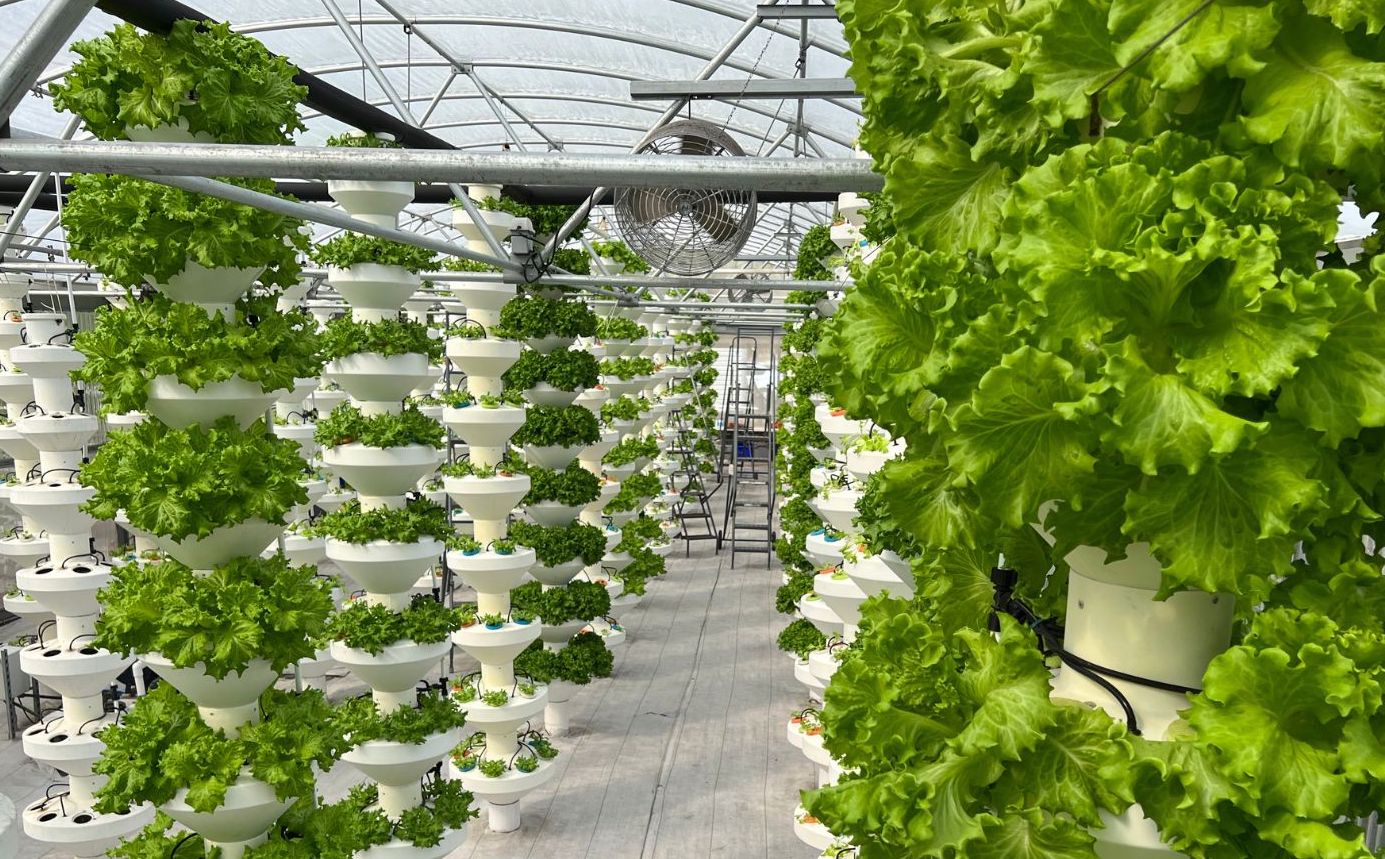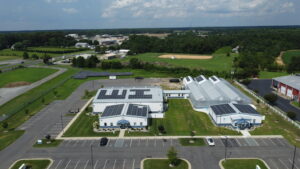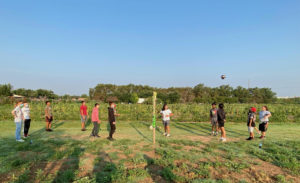Greater control is one reason that a handful of food banks are embracing soil-free systems as a way to grow produce for their clients.
Greenhouse farming through hydroponics (where the roots grow in water) and aeroponics (where the roots are irrigated with a mist of nutrients) offers a measure of control over pests, the weather, and perhaps most importantly, the level of nutrition food banks can offer their clients year round.
“The easiest way for us to influence health is the quality and caliber and volume of the nutritious foods we could supply in our food pantries,” said Robert Ranieri, CEO of Fla.-based House of Hope.
House of Hope currently operates three greenhouses with 65,000 cubic feet of aeroponic and hydroponic growing space to augment numerous raised garden beds, as well as a grove of fruit trees. Taken together, the yield from all of these farming facilities is expected to exceed 10,000 packages of produce monthly when full growing capacity is reached. The food bank has two harvest days per week.
In the greenhouses, leafy greens grow in 72 eleven-foot towers (with 60 plant sites in each tower), while 50-foot-long tomato plants trellis up into the bowers of the facility, said David Lee, Director of Food Procurement and Distribution. Currently, the greenhouses produce about 1,600 heads of leafy greens per week, which will increase to 2,000 heads a week this winter, alongside 10,000 to 15,000 pounds of tomatoes annually, as well as other produce.
House of Hope spent roughly $600,000 on infrastructure, including a state-of-the-art packing house in addition to the aeroponic and hydroponic growing spaces, Ranieri said. There are ongoing costs as well, including labor and electricity to keep equipment running around the clock. “It’s a lot of pumps and processes and lights,” noted Ranieri, who is looking into solar power as a way to mitigate electric bills. With operations relying heavily on volunteers, it’s a plus that greenhouse farming “is definitely easier on the back and knees than conventional growing,” Ranieri noted.
House of Hope’s packing house, opened earlier this summer, has amplified its greenhouses’ impact. “Efficiencies of scale have just blossomed,” Lee said. In just an hour and a half, the packing house can process, wash, spin-dry, disinfect, bag, and label an entire week’s crop of leafy greens. The packing house also enables House of Hope to clean and package roughly 100,000 pounds of produce gleaned from local farms alongside other donations. Long-term, Ranieri hopes to offer packing services to smaller local growers, in exchange for a reasonable fee or a share of their crop.
Despite the benefits of hydroponic and aeroponic farming, certain crops still grow best the old-fashioned way – outside, in the dirt. “There’s a place for both in this world,” Lee said. House of Hope’s outdoor raised beds grow root crops, such as carrots and sweet potatoes, as well as cabbage, squash, and beans, while its fruit orchard grows bananas, plantains, papayas, mangos, avocados, Barbados cherries, and mulberry.

In mid-Ohio, Dayton-based The Foodbank opened a 6,000 square-foot greenhouse in 2021 with a hydroponic system, so it could grow plants year round. The facility hosts about 80,000 plants, mostly heads of lettuce and herbs. Lettuce is a focus because it’s popular among clients, but is typically difficult to procure because of its short shelf life.
The Foodbank saw hyper-local sourcing as the best way to maximize the nutritional value of produce it distributes, said James Hoffer, Garden Manager. It distributes its home-grown lettuce within an hour after harvesting. “We can’t guarantee that people are eating it within 48 hours when it’s at its peak nutritional value,” Hoffer said, “but we hope.”
The hydroponic facility cost about $300,000 to build, although Hoffer estimated this would be closer to $500,000 had local electricians, plumbers, and excavators not donated services. He cited monthly electric bills averaging $400 to $500. Additional ongoing costs include growing inputs, such as fertilizer and seeds.
For its effort, The Foodbank reaps year-round production of about 1,200 to 1,500 heads of lettuce weekly in a climate that otherwise has a distinct growing season. “We are able to produce year round there regardless of outside temperatures,” Hoffer said. Greenhouse farming also offers the ability to grow vertically and help with pest management, Hoffer said. The Foodbank also has an outdoor raised bed operation – a “traditional grandma’s garden,” according to Hoffer – that grows four to five tons per year of items such as tomatoes, green beans, peppers, and squash.
Ranieri of House of Hope urged food banks considering greenhouse farming to plan well and take the time to educate funders. “Once they can see the same vision that you see and understand the impact that this would have on the success of communities, there’s no way not to get excited about it and want to see how they can help,” he said.
Lee of House of Hope focused on the dedication involved. “Plants don’t stop growing just because it’s the weekend. And they don’t stop growing just because there’s a storm coming. There’s got to be somebody willing to put the time in to keep this sustainable.”
Hoffer of The Foodbank advised organizations to embrace greenhouse farming. “Especially if you’re already growing to some degree and have some built-in knowledge and capacity in that area. Because you are controlling a lot of things that you can’t control in an outdoor growing system.” – Amanda Jaffe
Amanda Jaffe is a writer and former attorney with a deep interest in organizations and mechanisms that address food insecurity. In addition to Food Bank News, her essays and articles have been published in a number of print and online magazines and journals. Her writing may be found at www.amandajaffewrites.com.
PHOTO, TOP: Lettuce being grown in House of Hope’s soil-free greenhouse.
Like what you’re reading?
Support Food Bank News
This article was made possible by the readers who support Food Bank News, a national, editorially independent, nonprofit media organization. Food Bank News is not funded by any government agencies, nor is it part of a larger association or corporation. Your support helps ensure our continued solutions-oriented coverage of best practices in hunger relief. Thank you!
Connect with Us:










